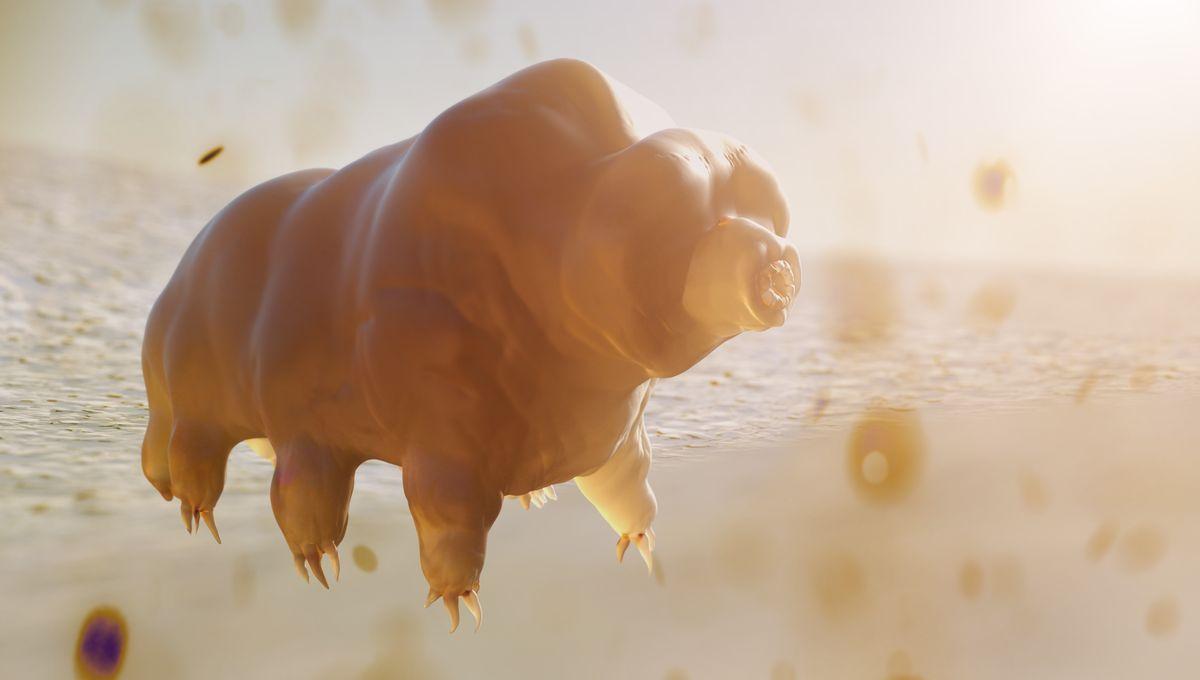-
Fil d’actualités
- EXPLORER
-
Pages
-
Blogs
-
Forums
Did We Accidentally Leave Life On The Moon In 2019 – And Could We Revive It?

Did We Accidentally Leave Life On The Moon In 2019 – And Could We Revive It?
We don’t really know if there is other life in the universe, but due to one failed Moon landing in 2019, we know there is terrestrial life on the Moon... kind of.
In February 2019, SpaceIL, a private Israeli non-profit that worked in partnership with the Israel Aerospace Industries (IAI), launched the Beresheet spacecraft into space. The aim was to be the first privately funded spacecraft to land on the Moon as well as to be Israel’s first lunar effort. A lot of excitement surrounded the project at the time, not just because of these ambitions, but because the craft was also carrying a special cargo. Within the Beresheet lunar lander was a 100-gram nanotechnology device called the Arch Lunar Library, designed by the Arch Mission Foundation, another non-profit organization that took it upon itself to create what it called “humanity’s backup plan”. The Library consisted of a record of human civilization, including 30 million pages of text and images etched onto thin nickel disks (the text covered Wikipedia snapshots in English, important books on human history and science, language primers, dictionaries, children’s drawings, and so on). In addition to this textual content, the library also held biological matter in the form of around 100 million human cells from 25 different people and, more interestingly, thousands of dehydrated tardigrades. These are adorable, tiny, and near-indestructible microorganisms found across the planet. They were encapsulated in resin and were snuggled up with the rest of this time capsule. Despite its tall ambitions, disaster was awaiting the Beresheet. On April 11, 2019, the lunar lander suffered a severe engine failure, resulting in it crashing into the lunar surface. Its wreckage remains spewed out on site, but the library survived the disaster. This means that the Moon now has one of the toughest animals from Earth still present on its surface. But given how robust they are, and the nature of their storage, is it possible to recover and even revive these micro water piglets? When I say tardigrades are tough, I’m not joking. They’re incredibly resilient little buggers that can survive in conditions that would kill most other organisms. This includes surviving temperatures between -272°C and 150°C (-458°F and 302°F). They are also capable of shrugging off high levels of radiation and can survive long periods without water. It has even been hypothesized that tardigrades could outlive humanity, surviving until the literal end of the planet in 10 billion years. Think that’s tough? They’re only getting warmed up. In 2021, researchers wanted to explore whether microorganisms could survive traveling through space on a meteorite. The ostensibly odd thinking is actually grounded in something important. One contending idea for the origins of life on this planet is panspermia, the idea that microorganisms hijacked a trip to Earth on these cosmic travellers. It remains a controversial idea, but to test whether it was at least feasible, the scientists loaded tardigrades into frozen nylon bullets – which caused the little test subjects to go into hibernation – and then fired them out of a gun. The results were mixed. The researchers found that tardigrades could survive impacts up to 0.9 kilometers (0.6 miles) per second, which is the equivalent of 1.14 Gigapascals, similar to the pressure used in industrial processes like synthetic diamond formation and high-velocity metal forging. However, the little critters were killed by impacts above this. Unfortunately, meteorite impacts often far exceed this level of impact, which is bad news for panspermia proponents, but it does show that tardigrades can survive conditions that would turn us into messy pulp. So, what does this all mean for the Moon tardigrades? The answer remains somewhat unclear, and it depends on what is done with them. The Moon is not a hospitable place for tardigrades to live and reproduce, so it won’t be a case of future generations finding colonies of the moss-loving micro bears. However, if their capsule could be recovered from the lunar surface and returned to Earth, then there is a possibility that any specimens that survived the initial crash could be revived. But this would be an extremely experimental and uncertain possibility to say the least. And all this depends on having the ability to locate and recover them from the debris in the first place. It’s a tall order, but who knows, if anything can survive such a crisis, tardigrades surely can.One small cockup by “man”, one giant spill for tardigrade kind
Tardigrades in space?


